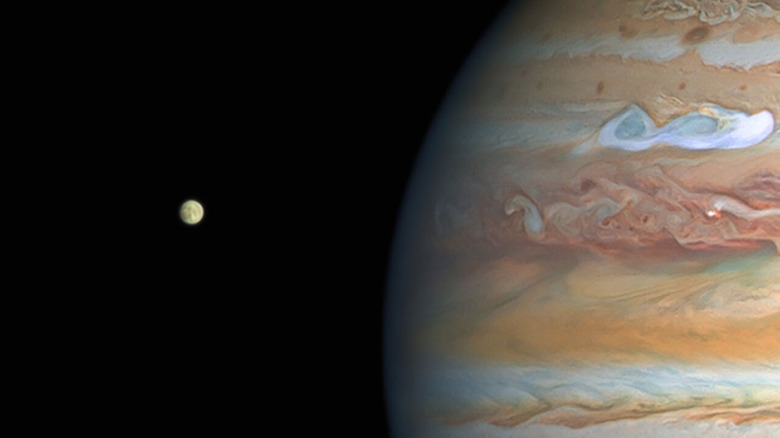Evidence Of Persistent Water Vapor Discovered On Europa
Our solar system has a lot of interesting planets and moons. One of the most interesting objects in the solar system is a moon orbiting the gas giant Jupiter, called Europa. Previously, the Hubble Space Telescope found water vapor in the atmosphere of one of Jupiter's moons called Ganymede. Now Hubble has discovered persistent water vapor in the atmosphere of another moon orbiting Jupiter, this time Europa.Research conducted by scientists using Hubble found that vapor is present in only one hemisphere of Europa. Scientists believe the discovery improves our understanding of the atmospheric structure of icy moons and helps to prepare for future science missions that will explore the moons orbiting Jupiter.
Jupiter has 79 moons. Of all of those moons, Europa is the sixth closest to the massive planet. It's an icy satellite that is larger than the dwarf planet Pluto. Europa's surface is smooth and ice covered with cracks and fissures marring surface. The average surface temperature on Europa is -170 degrees Celsius, and it has the thinnest of atmospheres.
Scientists have long suspected that Europa has a vast ocean under its crust of ice. For the first time, astronomers have discovered evidence of persistent water vapor in the atmosphere of the giant moon. Water vapor was discovered in the trailing hemisphere, which is the hemisphere of the moon always facing the opposite direction from the motion of its orbit around Jupiter.

Scientists were surprised to discover persistent water vapor on Europa because its surface temperatures are so low. Hubble made the observations discovering the water vapor using the Space Telescope Imaging Spectrograph. The instrument allowed researchers to determine the abundance of oxygen, one of the molecules that make up water. Researchers used measurements of the abundance of oxygen in the atmosphere of Europa and interpreted the strength of its emission at different wavelengths to infer the presence of water. Astronomers had previously discovered water vapor on Europa in the form of transient plumes spewing through the ice, similar to geysers on Earth.
